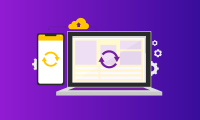What is CPC? How To Increase it? Guide for Publishers
CPC, which stands for Cost Per Click, has become a fundamental and widely used metric in online advertising. It gained prominence with the rise of digital advertising and the internet in the late 20th century. This model aligns the interests of both advertisers and advertising platforms, as it incentivizes platforms to display relevant ads that are more likely to generate clicks.
Over time, CPC evolved into more sophisticated bidding strategies and platforms, including ad networks, social media advertising, and programmatic advertising. These developments have further cemented CPC as a common and effective metric in the digital advertising landscape.
What is the Cost Per Click (CPC)?
CPC, or Cost Per Click, is a common online advertising metric that represents the cost an advertiser pays each time a user clicks on their ad. It’s widely used in digital advertising campaigns, such as pay-per-click (PPC) advertising.
Advertisers often use CPC, along with other metrics like click-through rate (CTR), conversion rate, and return on investment (ROI), to assess the success of their advertising efforts and make data-driven decisions about their campaigns.
CPC is attractive to advertisers because it minimizes risk. Advertisers only pay when a user interacts with their ad by clicking on it. This model aligns the interests of both advertisers and advertising platforms, as it incentivizes platforms to display relevant ads that are more likely to generate clicks.
What is the formula to calculate CPC?
CPC can be calculated using this formula:
CPC = Total Cost of Campaign / Total Number of Clicks
Here’s how you can calculate CPC:
Suppose you’re running a Google Ads campaign, and your total campaign cost is $500. During the campaign, your ads received a total of 1,000 clicks from users.
CPC = $500 (Total Cost) / 1,000 (Total Clicks) = $0.50 per click
So, in this example, your Cost Per Click (CPC) is $0.50, meaning you paid $0.50 for each user who clicked on your ad.
What are the benefits of using CPC?
CPC has been the most coveted metric for the following advantages:
- Easy to measure data
CPC provides advertisers with a wealth of data about their campaign’s performance. By tracking the number of clicks, advertisers can gain insights into which ads, keywords, or placements are driving the most engagement.
CPC (Cost Per Click) provides advertisers with valuable insights into audience segmentation. By tracking click data, advertisers can gain a deep understanding of which demographics, locations, or devices are most responsive to their ads. This insight enables the creation of highly targeted marketing strategies tailored to specific audience segments.
- Budget flexibility
Advertisers can set daily or lifetime budgets, ensuring they don’t overspend on advertising. Once the specified budget is exhausted, the ads stop running, preventing unexpected expenses.
They can adjust their maximum CPC bids for specific keywords, locations, or times of day to allocate their budget more effectively. This flexibility allows for efficient spending in areas that yield the best results.
- ROI-driven
CPC is inherently performance-based, as advertisers only pay when users engage with their ads by clicking. This aligns advertising costs directly with user actions, making it easier to calculate ROI.
Advertisers can track conversions (e.g., purchases, sign-ups) and connect them to CPC data to assess the true impact of their ad spend on business goals. This helps optimize campaigns for higher ROI.
- Strategic bidding
Advertisers can strategically bid for ad placements based on CPC. Higher bids can lead to better ad positions, potentially increasing visibility and click-through rates. They can analyze the relationship between ad position (e.g., being at the top of search results) and CPC to find the right balance between visibility and cost-efficiency.
This model also allows for real-time adjustments to campaigns. Advertisers can increase or decrease bids, pause underperforming ads, or scale up successful ones as needed to maximize results.
Who uses CPC?
CPC is used by advertisers and marketers who run online advertising campaigns on various platforms, such as search engines (Google Ads, Bing Ads), social media (Facebook Ads, Twitter Ads), display networks, and other online ad networks. It helps them measure the effectiveness and cost-efficiency of their advertising efforts.
Here’s a closer look at how CPC is used by different stakeholders:
- Advertisers
Businesses of all sizes, from small startups to large corporations, use CPC to drive their online advertising strategies. Advertisers also leverage CPC to fine-tune their targeting and messaging to reach their ideal customers with precision.
- Ad tech platforms
Ad tech platforms often incorporate CPC bidding mechanisms that allow advertisers to set their desired cost per click for specific keywords or placements. These platforms help advertisers optimize their bids to achieve their campaign objectives while adhering to their budget constraints.
- E-commerce Businesses
Online retailers heavily rely on CPC to drive traffic to their e-commerce websites and boost sales. They use CPC data to optimize product listings, bidding strategies, and ad creatives to maximize revenue while maintaining cost-efficiency.
What is the difference between CPC and PPC?
Is CPC the same as PPC?
CPC and PPC are related terms but not exactly the same. Here’s a breakdown of the differences in table format:
| Metric | CPC (Cost Per Click) | PPC (Pay-Per-Click) |
| Definition | The cost an advertiser pays for each click on their ad. | A type of online advertising where advertisers pay a fee each time their ad is clicked. |
| Focus | It is a specific metric that measures the cost of individual clicks. | It refers to the broader advertising model where advertisers pay per click, but it encompasses various metrics and strategies beyond just the cost per click. |
| Calculation | CPC = Total Cost of Campaign / Total Clicks | PPC is the overarching model; CPC is one of the metrics within PPC. |
| Example | If your ad campaign costs $500, and it receives 1,000 clicks, your CPC is $0.50. | In a PPC campaign, you may set a budget of $1,000, and every click on your ad deducts a specific cost from that budget (e.g., $2 per click). |
| Usage | Commonly used to measure the specific cost of clicks in advertising campaigns. | Refers to the broader concept of paying for each click on an ad, which can encompass various pricing models, including CPC. |
| Variations | CPC is a fixed metric, representing the cost per individual click. | PPC encompasses various pricing models, including CPC, CPM (Cost Per Mille), and CPA (Cost Per Acquisition), among others. |
Is low CPC good for advertisers?
A low CPC (Cost Per Click) can be advantageous for advertisers, but it’s important to consider it in the context of your overall campaign goals and objectives. In many cases, a lower CPC is beneficial because it can help advertisers manage their advertising budgets more efficiently and achieve a higher return on investment (ROI). However, whether a low CPC is “good” depends on various factors, including your industry, target audience, and campaign objectives.
Here are some scenarios where a low CPC can be advantageous for advertisers.
- Limited Budget
If you have a limited advertising budget, a lower CPC allows you to stretch your budget further and get more clicks for your allocated funds.
- Maximizing Clicks
When your primary goal is to drive traffic to your website or landing pages, a lower CPC means you can acquire more clicks for the same budget, potentially increasing your chances of achieving your traffic goals.
- Efficient Spending
A lower CPC indicates that you are getting clicks at a lower cost, which can lead to a more efficient allocation of your advertising budget.
How to keep your CPC low?
Achieving a low CPC (Cost Per Click) across various ad formats requires a combination of strategic planning, optimization, and continuous monitoring. Here are some factors that can help you reduce CPC in different types of ad formats.
- Detailed research
Begin your CPC optimization by conducting comprehensive keyword research to pinpoint keywords that strike a balance between low competition and high relevance. This process involves identifying key terms and phrases that potential customers are likely to use in their searches.
Simultaneously, delve into a deep understanding of your target audience’s preferences, behaviors, and demographics to fine-tune your targeting parameters. By aligning your keywords with your audience’s needs and characteristics, you can create a more precise and cost-effective advertising strategy, ultimately contributing to lower CPC.
- Generative AI for ad content
Generative AI has the potential to assist in the creation of precise ad content and visuals. These AI systems can analyze vast datasets and consumer behavior patterns to generate ad copy and visuals that are highly relevant and engaging.
They can also adapt to real-time trends and audience preferences, ensuring that the content remains current and compelling. While generative AI can be a valuable tool in ad creation, it is important to ensure that the generated content aligns with your brand message and objectives, and it may still require human oversight for final approval.
- Use ad networks
Ad networks offer bidding systems where advertisers can set their maximum CPC bids, which can help control costs. CPC/PPC (Pay-Per-Click) ad networks play a significant role in influencing the CPC advertisers experience.
These ad networks provide the infrastructure for advertisers to bid on keywords, target audiences, and place their ads on various digital platforms. While they don’t directly control the cost of clicks, they offer tools and features that advertisers can leverage to manage and potentially reduce CPC.
- Supply path optimization
By optimizing the supply path, advertisers can gain better visibility into the supply chain, reduce unnecessary intermediaries, and potentially reduce costs associated with ad placements. This can lead to a more efficient allocation of advertising spend, which can contribute to a lower CPC.
- Bidding strategies
It is essential to optimize your bids according to your objectives. Many advertising platforms offer automated bidding strategies designed to optimize your bids for conversions.
These strategies leverage machine learning algorithms and historical campaign data to adjust your CPC bids in real time. For instance, strategies like Target CPA (Cost Per Acquisition) aim to help you achieve a specific conversion cost by automatically adjusting your bids to drive more conversions within your budget.
Similarly, Target ROAS (Return on Ad Spend) strategies focus on maximizing your return by optimizing bids for a target ROI percentage.
- Brand reputation
To ensure brand safety, advertisers should incorporate negative keywords into their campaigns as a proactive measure. By effectively utilizing negative keywords, advertisers gain control over where their ads are displayed, thus reinforcing their brand’s reputation and values.
This strategic approach empowers advertisers to exclude specific terms or phrases that might be irrelevant, sensitive, or incongruent with their brand’s guidelines, thereby reducing the risk of their ads appearing alongside inappropriate or harmful content.
The utilization of CPC (Cost Per Click) as an advertising metric or model can be highly advantageous for advertisers, but it should be embraced strategically and with a deep understanding of its nuances.
Advertisers should consider integrating CPC into their advertising efforts when their business has reached a stage where it is genuinely beneficial and aligns with specific objectives and goals. In doing so, advertisers can employ a strategic approach to ensure holistic business growth and optimize their return on investment (ROI) through CPC.




Leave a Reply